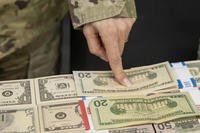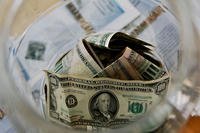Today, I'm going to tell you about a different way that I look at whether someone can afford a loan. It's not crazy revolutionary, but it might give you a tool to evaluate whether a loan is a good fit. We probably all know people who have bought a house or a car or a boat or whatever and discovered that they couldn't actually afford it. My "test your payment" plan is a great way to figure out if a loan is really affordable, and it has a bonus benefit at the end.
 The Plan
The Plan
Let's say you want to buy a new car.
- Do a little research and figure out how much the car costs. Knowing your down payment available, figure out what you might choose for a loan. Use the regular interest rate that is available today through regular channels, like USAA or Pentagon Federal Credit Union.
- Check with your insurance company to see how much the car insurance will cost, and break it down to a monthly payment. Your insurance company should be glad to give you a no obligation quote if you explain that you are just shopping.
- Check the gas mileage and compare it to your current car to see if you will be paying more or less for fuel.
- Find out if the vehicle registration cost will be the same, or if will go up or down.
Take these four costs, and all them together. Then add $50 for a maintenance fund. This is how much your new car will cost you each month.
Now comes the radical part. Instead of just guessing whether you can afford this expense, I want you to test it. For the next six months, transfer this much money into a separate savings account. Don't touch it.
If, at the end of six months, you have successfully made every single "payment" on time, and you haven't otherwise messed up your money to do so, then you know that you can actually afford the car.
Why This Is Good
First, this plan helps you know, for sure, that you can afford the new car. It's not fun to buy a shiny new car and then realize that you can't afford it.
Even better, you'll have six months of payments saved up. You can use this as a down payment, which will lower the term of the loan. You can also keep a chunk out to fund your car emergency fund. This is a major bonus of this plan. Most people find that they are spending between $500 and $1000 a month on all their vehicle related costs. Being able to put an extra $3,000 to $6,000 down on your car loan is a big deal!
Looking Ahead
The advanced version of this plan is that when you pay off this car loan, you continue making that same payment into your vehicle account. The next time you buy a car, you'll have even more saved up for a down payment, and the cycle will continue. Eventually, you'll be able to pay cash for your cars, saving on interest and giving yourself more financial flexibility.
Next time you want to make a purchase that will require a loan, try out my "test your payment" plan. It's a winner, and you will be, too!









